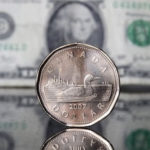 Natural gas swung between gains and losses on Friday and traded lower during the early U.S. session as weather forecasts kept predicting mild weather up to mid-August. Most of analysts surveyed in a Bloomberg poll expected prices to continue declining next week.
Natural gas swung between gains and losses on Friday and traded lower during the early U.S. session as weather forecasts kept predicting mild weather up to mid-August. Most of analysts surveyed in a Bloomberg poll expected prices to continue declining next week.
On the New York Mercantile Exchange, natural gas for September delivery traded at $3.385 per million British thermal units, down 0.07% on the day. Prices ranged between days high at $3.407 and low of $3.357, near the lowest since February. The fuel plunged 1.92% on Thursday following EIAs bearish report and is so far marking a 5.3% weekly decline after plunging 5.2% the previous week.
Natural gas was pressured in the last couple of weeks as weather forecasting models pointed at mild temperatures across key consuming regions. According to MDA Weather Services in Gaithersburg, Maryland, temperatures will remain below normal from the East Coast to the Great Plains through August 15. According to a Bloomberg survey, six out of eleven analysts, or 55%, wagered prices will fall next week, while two, or 18%, expected prices to climb. The remaining three projected no change.
Teri Viswanath, director of commodities strategy at BNP Paribas SA in New York, said for Bloomberg: “The composite weather forecasts for the first half of August are tracking just inside the bottom 10 observations since 1950. Without a change in weather, prices will trade within a relatively tight band of $3.25 to $3.50.”
When above-normal temperatures are expected, natural gas surges as increased electricity demand to power air-conditioning calls for more supply of the fuel, which is used for a quarter of the U.S. electricity generation. Mild temperatures have the opposite effect.
The September contract fell to $3.344 on Thursday, the lowest since the week ending February 24, following the Energy Information Administrations bearish natural gas inventories report. The government agency said that during the week ending July 26, the U.S. natural gas storage increased by 59 million cubic feet to 2 845 billion. This was 11.5% lower than the total amount of gas held in underground storage hubs in the same week a year earlier, which equaled 3 213 billion cubic feet. Last week’s figure was also 1.2% below the five-year average stockpiles, which stood at 2 879 billion cubic feet. However, the government report underperformed expectations. According to a survey of analysts by Platts, the energy information arm of McGraw-Hill Cos., government statistics should have shown that natural gas inventories gained in a range between 54 billion and 58 billion cubic feet.
Gene McGillian, an analyst and broker at Tradition Energy in Stamford, Connecticut, said for Bloomberg: “I think the market continues to grind lower. The break below $3.50 suggests that the market is hunting for the bottom. With the weather forecast in the coming week and early calls to see a pretty sizeable injection, the following week isn’t going to be very strong.”





